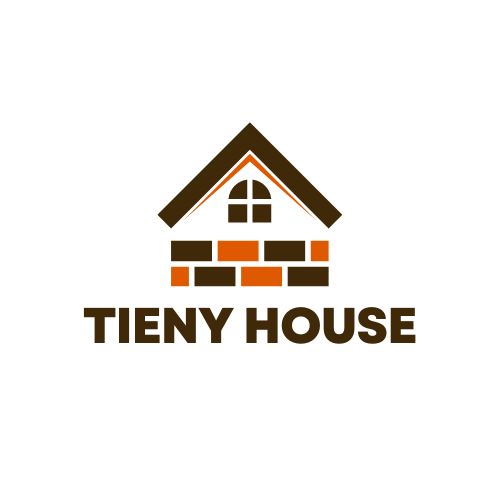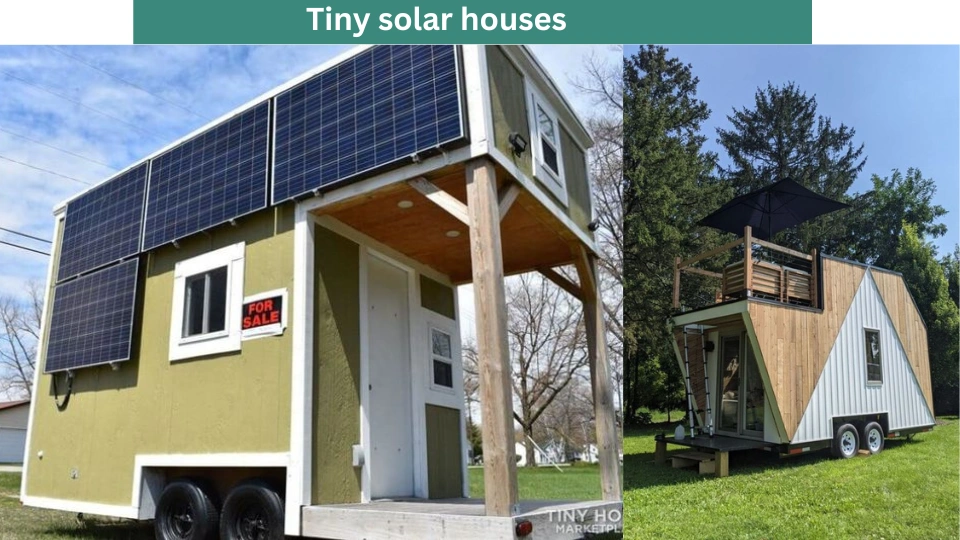Tiny solar houses are a fantastic way to reduce energy usage and simplify living. If you’re considering or already living in a tiny solar house, you can significantly cut down on utility bills by harnessing free electricity from solar panels.
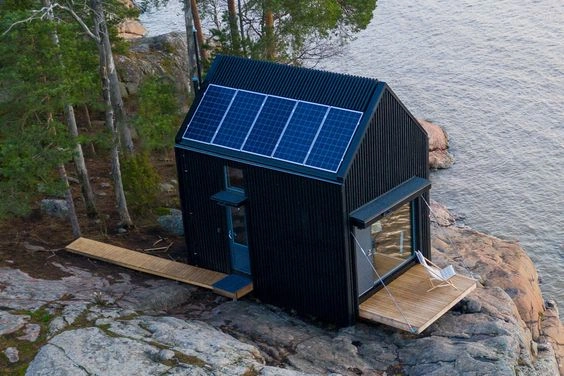
Living in a Tiny solar house often means being off-grid, making solar panels an ideal energy source. But you might be wondering how many solar panels you need for your tiny solar house. Well, it depends on factors like the number of appliances you use, your overall electricity needs, and how much sunlight your roof or chosen solar panel location gets.
Let’s delve into how much solar power you need for your tiny solar house and what it takes to set up a solar system for it.
Table of Contents
ToggleHow Much Solar Power Do You Need For a Tiny House?
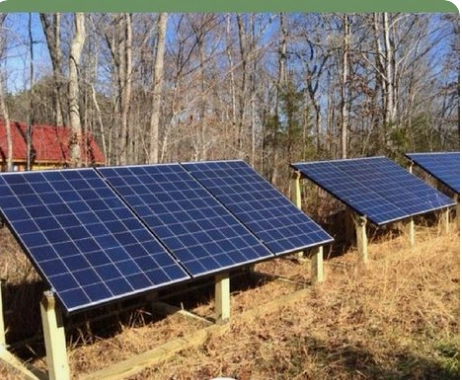
To figure out how much electricity you need for your Tiny solar house, first, you need to know how much power you use. You can do this in two ways:
- Look at your current utility bills.
- Add up how much energy all your appliances use every day.
For example:
In this example, you’ll need about 21,631 watt-hours of electricity per day.
Now that you know how much power you require, you can figure out how many solar panels and batteries you need.
Advantages of Utilizing Solar Energy for Tiny Homes
Choosing solar power for your tiny solar house brings several advantages. Many people who live in tiny houses aim to help the environment and save money. These are also the reasons why homeowners opt for solar energy. Here are the main benefits:
- Saving Money on Utility Bills: Solar power can significantly reduce or even eliminate your electricity costs. Even though tiny houses already have lower utility bills due to their small size, installing solar panels can further reduce or eliminate these charges. Living in an area with ample sunlight and using net metering can increase your savings.
- Eco-Friendly Living: If you live in a tiny house, you likely care about the environment. Solar energy is environmentally friendly because it doesn’t harm the environment like fossil fuels do. It additionally diminishes greenhouse gas emissions and pollution. By generating renewable energy, solar power helps decrease waste and pollution.
By choosing solar energy, you can contribute to saving the planet while enjoying the benefits of reduced utility bills for your tiny solar house.
Living Off the Grid: When you’re connected to the power grid, you depend on a company for electricity. But sometimes, like during storms or natural disasters, the power can go out.
But with a tiny solar house, you use the sun’s energy for power. Even if there’s no sunlight, you can store extra power in batteries. So, you won’t have to worry about losing electricity. You can live without relying on the main power grid and take your power with you if you move.
Boosting Your Home’s Worth: If you’re thinking of selling your tiny solar house later, adding solar panels is smart. Solar energy makes your tiny home more valuable. People are willing to pay extra for homes with free, clean, and renewable energy.
Getting Government Help: Local governments help with tiny solar houses cost by giving rebates. In Canada, the government offers tax breaks and subsidies for switching to solar energy.
Enjoying More Freedom: If you have a tiny house on wheels, you can travel anywhere with it. Solar power lets you take your home to remote places and still have modern comforts.
Determining the Required Number of Solar Panels for Your Tiny House
For a tiny solar house, the number of solar panels you need depends on how much electricity you use each day and other factors like where you live and how much space you have on your roof. Let’s use an example: if your house uses about 21,631 watts of electricity per day, you’ll need enough tiny solar houses panels to make that much power.
Each solar panel can make between 250 and 400 watts of electricity per hour. So, if you have a 250-watt panel that gets sunlight for 8 hours, it’ll make 2000 watts of power in a day. To make 22,000 watts per day, you’d need about 11 solar panels.
Usually, tiny houses need around 12 solar panels, each making 400 watts, to make enough power.
Factors like how much electricity you use, where you live, and how big your roof is will determine how many solar panels you need for your tiny house.
- Consider Power Usage: More appliances mean more panels required for sufficient electricity production.
- Account for Occupancy: Higher occupancy leads to increased energy consumption, necessitating more panels.
- Assess Roof Space: Limited roof area in tiny houses may limit the number of panels; ground installation is an alternative.
- Evaluate Panel Efficiency: Opt for high-efficiency panels to maximize power output with fewer units.
- Factor in Location: Optimize panel orientation for maximum sunlight exposure based on geographic location.
Factors to Consider Prior to Constructing a Solar System for Your Tiny House
To make sure your tiny house solar setup saves you money and works well, consider these factors.
Amount of Electricity
When you live in a tiny solar house, you usually use less electricity than in a big one. But every home is different. To find out how much power you need, you can use a tool from the US Department of Energy. It tells you exactly how much energy you use each day and how many solar panels you should get. Another option is EcoFlow’s calculator for Power Kits.
Off-grid solar system
If you’re new to using renewable energy like solar power, you might think it’s all “off-grid.” But you can also connect your solar system to a traditional power grid.
Having a power grid as a backup can be helpful if you’re concerned about not getting enough sunlight or facing bad weather.
This means you can buy energy from a utility company if the solar power you generate isn’t enough for your needs.
Ground-Mounted Solar Systems
Before getting a tiny solar house system, you should check if your roof can hold solar panels. Ask yourself:
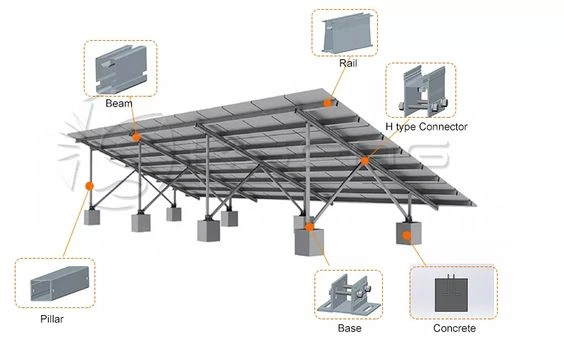
- Does your roof get enough sunlight?
- Can you use racking equipment to secure the panels?
- Is your roof big enough for all the panels you need?
Every roof is different. Some might not be suitable for panels due to shape or strength.
DIY or Professional Installation
Setting up your tiny solar house system correctly ensures it works well and is safe. If you’re new to solar, it’s best to have a professional do it. EcoFlow’s Power Kits are easy for DIYers, but pros can install them too.
Budget
When planning your tiny solar house, your budget guides your choices for panels, inverters, and generators. Monocrystalline panels are efficient, although they cost more initially. It’s wise to set a practical budget for your solar system, especially when considering the expenses for tiny solar houses panels. Some banks offer financing options tailored for solar projects.
Constructing a Solar System for a Tiny House: A Step-by-Step Guide
To create a dependable solar system for your tiny solar house, follow these steps:
Step 1: Pick the Right Solar System Once you know how much energy your tiny home requires, find a suitable solar power system. The EcoFlow Power Kit is recommended for off-grid tiny homes. It includes solar charge controllers, an inverter charger, solar panels, and a smart generator. You can monitor power usage through the Ecoflow App.
This kit can power all essential small appliances for tiny houses, such as microwaves, crockpots, air conditioners, Stove, fridges, TVs, and lights. There are various battery options available to match your power storage needs.
Step 2: Decide Where to Put Your Solar Panels Now that you know how much energy you need and how many solar panels you require, it’s time to choose a location for them. Look for a spot with plenty of direct sunlight. There are tools available to help you find the best spot.
Consider installing your solar panels on the ground instead of on the roof. Ground-mounted panels are easier to access, allowing you to adjust their angle easily. They’re also simpler to fix, clean, and keep an eye on.
Roofs can become very hot, which can reduce the efficiency of solar panels. Mounting them on the ground might be a better option in some cases.
Step 3: Pick Your Mounting System To get the most sunlight, position your solar panels facing the sun. You can mount them on the roof or on the ground. Roof-penetrating racks are drilled into the roof, providing easy attachment points for the panels.
Since tiny houses often have limited roof space, it’s often better to mount panels on the ground. There are various ground mount systems available, including pole mounts that let you adjust the panel’s angle. You can attach the panels to the mounting equipment using clamps or connectors.
Step 4: Connect Your Solar System Connecting your tiny solar house involves linking the panels to the battery, controller, and inverter. Follow the instructions closely and ensure proper connections before installing the panels.
Check that you’ve connected the right wires to each component to ensure energy transfer occurs. Once everything is connected, ground your system by attaching all cables from the panels, inverter, and charge controller to the chassis of your tiny house.
Grounding the system ensures better power and voltage delivery to your home. Luckily, the EcoFlow Power Kit is designed with fewer wires and modules, making assembly quicker. All components plug into a single plug-and-play power box for added convenience.
Tiny Solar Houses Photos
The captivating tiny solar houses photos, showcasing innovative designs and sustainable living solutions, inspiring your next eco-friendly adventure.
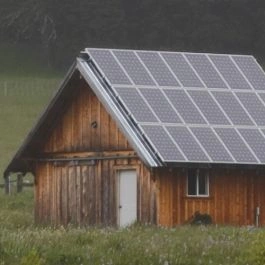
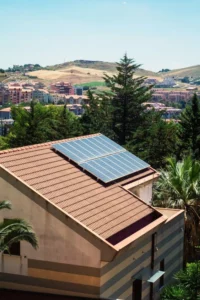
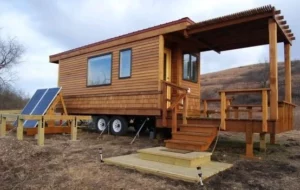
Conclusion
The price of tiny solar houses and solar energy are a perfect match. Solar power saves money on electricity, helps the environment, and might even provide tax benefits.
This guide will assist you in determining your energy usage, selecting the optimal solar system setup, and choosing the appropriate EcoFlow Power Kit for your requirements.
Frequently Asked Questions
Is it Legal to reside in Tiny Solar Houses Australia?
In Australia, there aren’t specific laws for tiny houses, but they often fall under caravan regulations. If designed as transportable homes, they might not need to meet Building Code of Australia (BCA) standards.
What are the key Factors influencing the Growing Popularity of Tiny Solar Houses in Heathcote?
The surge in popularity of tiny solar houses in Heathcote stems from their eco-friendly design, compact size, and ability to provide energy independence, all aligning with the community’s sustainability goals. Rising energy costs and government incentives further drive their adoption.
How do Tiny Solar Houses in NSW Contribute to Sustainable Living?
Tiny solar houses in NSW contribute to sustainable living by harnessing solar energy, minimizing environmental impact, and promoting energy efficiency.
